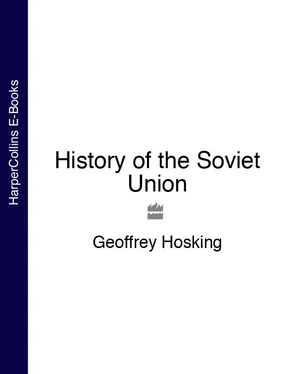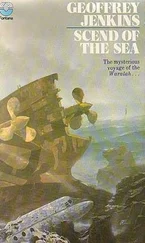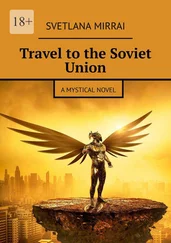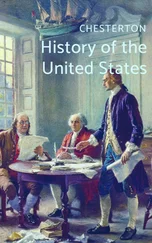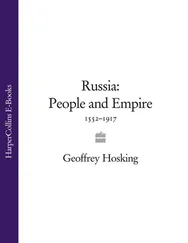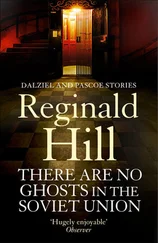Besides, during the First World War, Lenin became increasingly impressed by the revolutionary potential of the colonized nations of the world, especially those in Asia. In Imperialism, the Highest Stage of Capitalism (1916) he developed the view that the class struggle was now taking place on an international scale, and that the colonized nations as a whole were being exploited by the advanced industrial nations of Europe and North America. It followed that, at the present stage of history, the slogan of national self-determination was a revolutionary one, and in particular that the subject nationalities of Russia, led if necessary by their ‘national bourgeoisie’, should be encouraged to over-throw their oppressors and decide their own future.
Lenin, then, viewed national aspirations as real and powerful. Nevertheless, he did believe that in the long run they were secondary. And since Lenin always tended to hope that ‘the long run’ might be speeded up, the result was considerable ambivalence on the national question, an ambivalence reflected in his policy after October. His intention was that nations of the old Russian Empire should be allowed either to declare their complete independence from Soviet Russia or to join the new state as a constituent part of it. He did not envisage any intermediary position. In fact, however, as it turned out, what most nations actually desired in 1917 was neither complete independence nor total assimilation, but some form of associate or autonomous status within a multinational federal state.
In this significant way, the Bolsheviks were out of tune with the aspirations of the nationalities. Furthermore, in the absence of world revolution, Lenin was in no position to offer them genuine internationalism: the most he could extend to them was membership in a multinational state dominated in numbers, language, culture and administrative power by Russians. Without the safeguards of a federal structure, this threatened to mean actual Russification, the very evil against which they had struggled, with Lenin’s support, under the tsars. This danger was intensified by the Bolsheviks’ explicit subordination, in theoretical terms, of national independence to ‘proletarian internationalism’: as Lenin frequently reiterated, the primary concern of the proletarian party was ‘the self-determination, not of peoples, but of the proletariat within each nation’.
In order to meet these dilemmas, the Bolsheviks in government had from the beginning to compromise, and to accept in practice what they denied in theory, a federal structure. The Declaration of the Rights of the Toiling and Exploited People, of January 1918, explicitly called the new Soviet state ‘a federation of Soviet national republics’. At that stage, of course, even this was a mere aspiration, since the Bolsheviks did not control most of the outlying regions of the empire in which the intended national republics were situated: federation was accepted temporarily as preferable to disintegration. Nevertheless, the use of the word had long-term implications. It harmonized with the Declaration of the Rights of the Peoples of Russia (2 November 1917), which recognized the equality and sovereignty of all peoples, abolished all national privileges and restrictions, and established the right to self-determination ‘up to and including secession and the formation of an independent state’.
To deal with the manifold and delicate problems of relations with the nationalities, Lenin set up a People’s Commissariat of Nationality Affairs ( Narkomnats for short) under Stalin. It mediated in conflicts between national groups, and advised generally on the ways in which Bolshevik policies would affect the non-Russians. As more nationalities gradually passed under Soviet rule, Narkomnats also became a real instrument of political influence. At its head was a ‘collegium’, a kind of large committee on which elected representatives of the nationalities sat. Narkomnats thus collated and aggregated national opinion as well as providing a means by which orders could be passed down from above.
Whenever national self-determination clashed with ‘proletarian internationalism’, it was the latter which took precedence. This can be seen even in the case of Finland, which had been a Russian protectorate for only a century. It is true that when a non-socialist government led by Svinhufvud declared independence, the Soviet government in Petrograd recognized this. It also, however, simultaneously supported a Red rising inside Finland, designed to instal a pro-Soviet government in Helsinki. This rising was crushed after the Treaty of Brest-Litovsk, when the Germans intervened on the side of the Finnish Whites. Here for the first time a danger appeared which was to recur frequently: that of Red troops being regarded by the local population as Russifiers and being therefore resisted as foreign invaders.
The history of Estonia, Latvia and Lithuania was somewhat similar. In Estonia and Latvia a National Council took advantage of the Soviet Declaration of the Rights of the Peoples and announced their independence from Russia, only to be arrested by Red Guards who installed a Soviet regime. These in their turn were swept aside by the German occupation troops following the Treaty of Brest-Litovsk. Then, after November 1918, with the defeat of the Germans, all three national movements struggled to consolidate the existence of independent republics in a dual war against both the Red Army and local socialists (who were especially strong in Latvia). They succeeded in this, at least partly owing to armed support both from irregular German units and from the British navy, which was trying to clear the region of both Russian and German influence. In this way Estonia, Latvia and Lithuania became independent republics which lasted till 1940.
Poland’s independence from Russia was already a fait accompli when the Bolsheviks came to power, since the whole of the Congress Kingdom (the Russian sector of Poland) had been occupied by the Germans in 1915. Recognition of this was a pure formality. What reopened the question was the decision of Pilsudski, the Polish leader, in 1920, to invade the Ukraine and attempt to reincorporate territory which had been ruled over by the Poles before the partitions of the late eighteenth century. The Poles did very well at first, and in fact captured Kiev, but the Red Army then regrouped itself from its victories over Denikin and managed to drive the Poles back out of the Ukraine. The question then arose: should the Red Army profit by its impetus, pursue the enemy into Poland itself, and try to set up a Soviet republic in Warsaw? On this the Soviet leaders were themselves divided, and their divisions were significant. Trotsky took the immaculately internationalist line that socialist revolution in Poland should proceed from the efforts of the Polish workers themselves: for the Red Army to invade would merely persuade them that the Russians had returned, albeit under a new banner, to occupy and rule over their country as before. Lenin, on the other hand, took the view that circumstances were once again favourable for world revolution: encouraged by the heroism of the Red Army against their own bourgeoisie and landowners, the Polish workers would rise against their native oppressors and overthrow their government. Beyond that, too, the revolution might spread to Germany and even the rest of Europe. For a brief intoxicating moment the dreams of October 1917 returned: a Polish Provisional Revolutionary Committee, headed by the Social Democrat Marchlewski, waited in Moscow to take up the reins of power in Warsaw (a scene to become familiar in Europe in 1944–5), while Stalin began to elaborate plans for the creation of a super-confederation of Soviet republics, to include Poland, Hungary and Germany.
Читать дальше
